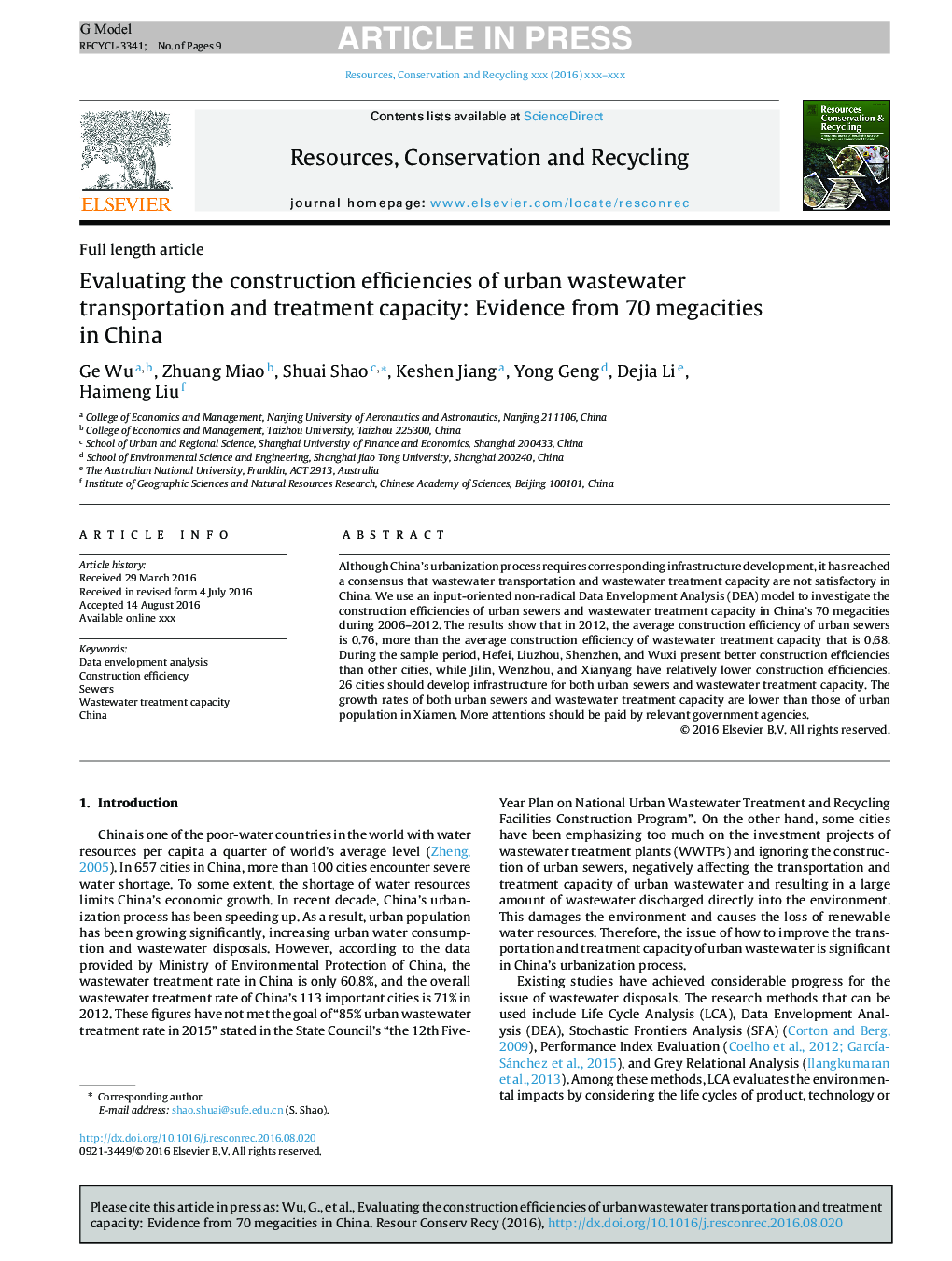| Article ID | Journal | Published Year | Pages | File Type |
|---|---|---|---|---|
| 7494716 | Resources, Conservation and Recycling | 2018 | 9 Pages |
Abstract
Although China's urbanization process requires corresponding infrastructure development, it has reached a consensus that wastewater transportation and wastewater treatment capacity are not satisfactory in China. We use an input-oriented non-radical Data Envelopment Analysis (DEA) model to investigate the construction efficiencies of urban sewers and wastewater treatment capacity in China's 70 megacities during 2006-2012. The results show that in 2012, the average construction efficiency of urban sewers is 0.76, more than the average construction efficiency of wastewater treatment capacity that is 0.68. During the sample period, Hefei, Liuzhou, Shenzhen, and Wuxi present better construction efficiencies than other cities, while Jilin, Wenzhou, and Xianyang have relatively lower construction efficiencies. 26 cities should develop infrastructure for both urban sewers and wastewater treatment capacity. The growth rates of both urban sewers and wastewater treatment capacity are lower than those of urban population in Xiamen. More attentions should be paid by relevant government agencies.
Keywords
Related Topics
Physical Sciences and Engineering
Energy
Renewable Energy, Sustainability and the Environment
Authors
Ge Wu, Zhuang Miao, Shuai Shao, Keshen Jiang, Yong Geng, Dejia Li, Haimeng Liu,
